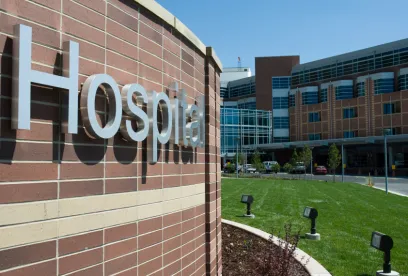Summary
After nearly two decades of restructuring service agreements to comply with Internal Revenue Service safe harbors, hospitals and other 501(c)(3) organizations are now subject to a new set of guidance and a single safe harbor to avoid prohibited private use of property financed with tax-exempt bonds. The new Revenue Procedure 2017-13 is more flexible in some ways than the old Revenue Procedure 97-13, but more limiting in others. All future service contracts and other agreements involving bond-financed facilities must be drafted to comply with the new safe harbor or risk significant adverse tax consequences.
In Depth
All hospitals and health systems that have financed any of their facilities or equipment with the proceeds of a tax-exempt bond offering must be aware of new tax rules that took effect last week. Even hospitals that have carefully complied with longstanding Internal Revenue Service (IRS) guidance can be caught by surprise by these new rules, which can be easily (and accidentally) violated by commonplace commercial contract negotiations.
The potential consequences for such violations can be catastrophic, including loss of the federal income tax exemption for interest on existing bonds. Importantly, under the new rules, agreements previously drafted in a form to comply with the safe harbors in prior guidance (Revenue Procedure 97-13) will not automatically satisfy the safe harbor in the new guidance (Revenue Procedure 2017-13).
Background Regarding Private Use Limitations
Tax-exempt hospitals and other 501(c)(3) entities that finance construction and other major expenditures using tax-exempt bonds are familiar with the limitations on use of bond-financed property by private parties. These private business use restrictions aim to ensure that government-subsidized financing is utilized by eligible governmental and certain qualified charitable entities to further their exempt purposes, rather than by for-profit businesses.
For charitable entities, generally no more than three percent (i.e., five percent less two percent permissible issuance costs) of the net proceeds of a tax-exempt bond issue can be used for private business use without jeopardizing the tax-exempt status of the bonds. For governmental hospitals, the permissible levels of private use are up to 10 percent of the bond proceeds. Private use is measured not just by how initial bond proceeds are spent, but by how the bond-financed property is used over the entire lifetime of the underlying bonds—typically 30 years.
All “management contracts” involving the use of bond-financed property need to be analyzed for potential private use. While this is the phrase used by both the IRS and tax-exempt hospitals, potential proscribed private use of tax-exempt bond proceeds extends beyond just “management contracts” and applies to nearly any agreement between a 501(c)(3) entity and a private vendor or service-provider:
-
For 501(c)(3) hospitals, this can include management services agreements, physician services agreements, research agreements, pharmacy agreements, affiliation agreements, joint operating agreements and any other arrangement that allows a private party to conduct business on bond-financed property. We will refer to all such contracts as “service contracts.”
-
Joint ventures can also raise proscribed private use issues, even if the joint venture is between two section 501(c)(3) organizations.
-
As a reminder, and generally speaking, leases and subleases (as opposed to service contracts) constitute per se private use under both the old rules and the new rules.
-
Agreements for incidental items such as janitorial, landscaping or hospital billing services are not subject to private use limitations, although the permissible scope of “incidental uses” is quite narrow. Typical employment agreements for W-2 salaried employees and mere admitting privileges available to all qualified physicians in the area likewise should not raise private use problems.
IRS Safe Harbors, New and Old
Because of the difficulty of tracking private use—particularly in a hospital setting with potentially expansive facilities and many types of private parties providing services on or involving bond-financed property—the IRS has historically outlined “safe harbors” that allow 501(c)(3) borrowers to structure service contracts in a manner that is deemed to trigger zero private use.
These safe harbors—in place since the mid-1990s, with only minor changes along the way—have proven a major piece of IRS guidance for tax-exempt hospitals. They are so familiar to in-house and outside counsel in the health care industry that many practitioners simply refer to the rules using the name of the relevant IRS revenue procedure, “97-13,” despite the fact they have been amended a few times over the years. Revenue Procedure 97-13 has now been superseded, with implications for all hospitals seeking tax-exempt financing or with tax-exempt bonds already in place.
While it is certainly possible to enter into contracts that fall outside of the safe harbors and argue based on the “facts and circumstances” that private use does not occur, this approach has several potential pitfalls. First, many bond documents contain covenants that require compliance with 97-13 safe harbors (not just covenants agreeing to abstain from arrangements creating private use under the regulations). Accordingly, non-safe harbor arrangements can trigger a technical default under some tax-exempt borrowers’ bond documents even though arguments exist that such arrangements do not constitute proscribed private use under the facts and circumstances test set forth in the regulations. Second, relying on the facts and circumstances test can sometimes lead to difficulties when the bonds are being refinanced as bond counsel may have concerns with such arrangements.
The new safe harbor rules are set forth in Revenue Procedures 2016-44 and 2017-13, which we will refer to collectively as “2017-13.” The rules took effect August 18, 2017. Contracts entered into between August 22, 2016, and August 17, 2017, were eligible to satisfy either the old or new safe harbors; beginning August 18, 2017, this transition period ended and all new or modified contracts must meet the requirements of the new guidance in order to be safe harbor compliant. This new guidance dramatically liberalizes the old rules for contracts between charitable organizations and private service-providers, but also raises interesting issues that must be confronted by tax-exempt hospitals.
Longer-Term Service Contracts Are Now Possible
Some tax-exempt hospitals have struggled with the short contract term lengths permissible under 97-13 and subsequent guidance, which resulted in most service contracts not exceeding a five-year term in order to meet the safe harbors. Hospitals are now free to enter into much longer-term contracts while remaining within the safe harbors; this commercial flexibility is a welcome development. The price for such flexibility, however, is a lack of bright-line rules like those that existed under 97-13. Gone are the days of handy charts depicting the maximum term length based on a given contract’s compensation structure and termination provisions.
Under Revenue Procedure 2017-13, contracts of up to 30 years can be permissible. More precisely, the term of the contract cannot exceed the lesser of 30 years or 80 percent of the weighted average reasonably expected economic life of the managed property. A contract’s term length includes any renewal option that is legally enforceable by one or both parties but a provision for automatic renewal absent cancellation by either party is ignored. While upon first reading, the new safe harbor appears to greatly liberalize the permissible lengths of service agreements, the “lesser of” phrasing requires a hospital to prepare economic life computations to justify the term lengths of all but the shortest contracts.
This “80 percent limitation” has proven to be a challenging aspect of the new guidance. In order to arrive at the weighted average for all bond-financed property in the aggregate, detailed models must be prepared analyzing the remaining useful life of each asset that was financed with tax-exempt bonds within the space to be used by a private person. This process is similar to (and perhaps derived from) the economic life analysis prepared for the issuance of the relevant bonds. For many hospitals, this will involve an analysis of multiple issuances of bonds over the course of decades. Adding to the complexity, the IRS provides a special rule regarding the useful life of land: if 25 percent or more of a bond issue’s net proceeds financed land, the land is treated as having an economic life of 30 years; otherwise, land is disregarded completely in the economic life calculations.
Hospitals with longstanding bonds and no recent issuances may find themselves quite constrained by the 80 percent limit given the short remaining lives of the underlying assets, eliminating much of the flexibility offered by 2017-13 on its surface. Hospitals with more recent tax-exempt financing activity, particularly if bond proceeds were used for construction, will more likely be able to enter into longer-term commercial arrangements.
Safe Harbor Contracts Must Be Modified to Include Required IRS Provisions
Various provisions must be included in every new service contract, and every existing service contract that is materially modified on or after August 18, 2017, in order to demonstrate that ultimate control remains with the tax-exempt party for purposes of the safe harbors. Accordingly, and importantly, an agreement that previously met the requirements for the safe harbors under Rev. Proc. 97-13 will not automatically meet the new safe harbor. For example, the hospital must retain control over key items such as the annual budget, capital expenditures, property dispositions and rates charged for use of the managed property, and the service-provider must agree not to take certain tax positions that would reflect ownership for tax purposes (e.g., depreciation deductions).
Hospitals in states with corporate practice of medicine prohibitions, such as California, must consider how to include the required language in contracts between a medical foundation and a medical group, where hospital property will be used but the hospital is not a party to the contract.
Revenue-Driven Compensation Structures Must Be Closely Reviewed
The new IRS guidance contains various other changes that are beyond the scope of this article, and certain questions remain open. One issue practitioners had hoped might be addressed was how the IRS will view compensation structures that include both a revenue-sharing component and payment by the service-provider of certain expenses.
Bond-financed hospitals continue to be bound by the familiar principles that compensation paid to the private party must be reasonable and must not be based on sharing net profits or the burden of net losses. Traditional compensation methodologies, including capitation fees, periodic fixed fees, per-unit fees and some forms of incentive compensation all remain permissible. But it is difficult to fit many modern compensation structures into the new safe harbors.
For example, if the service-provider pays some of the operating expenses of the facility without reimbursement, this is acceptable under 2017-13 if combined with one of the traditional compensation methodologies listed in the prior paragraph. If, however, the service-provider’s compensation is based on a percentage of gross revenue, payment of expenses that would otherwise be borne by the hospital makes the overall arrangement resemble a net profits approach. Concerns have arisen that even the service-provider’s payment of its own employees’ salaries, combined with a percentage of gross revenue contract, could trigger private use. To date, the IRS has not offered clarification on this point in the new guidance.
Practical Takeaways
The new safe harbor rules are now in effect, as of August 18, 2017. The impact is as follows:
-
All existing service contracts that are materially modified or extended must satisfy the new rules, even if the original contracts complied with the old 97-13 rules. This means even minor amendments to existing service contracts will require the contracts to be analyzed under the new guidance and updated accordingly. Note that an extension pursuant to an automatic renewal provision does not subject an existing contract to the new safe harbor rules as long as neither party had a legally enforceable right to renew and the contract simply renews absent action to terminate it.
-
New service contracts entered into from this date forward must satisfy the new rules if they are intended to fit within IRS safe harbors for private use of bond-financed property. Form documents need to be updated to include new required provisions.
-
Any 501(c)(3) organization preparing for a tax-exempt bond issuance must review all outstanding service contracts to determine safe harbor compliance.





 />i
/>i
